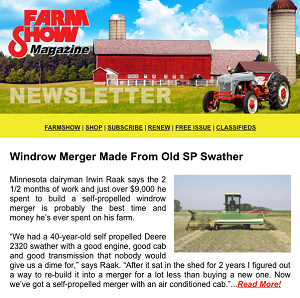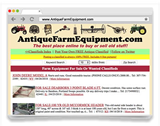Old Cattle Breed Finds New Niche
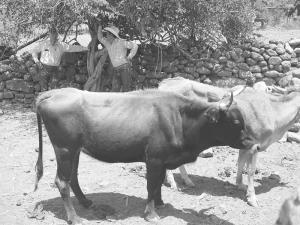 ✖  |
Old breed Criollo (cree-o-yo) cattle have been living and adapting in the deepest canyons of Mexico for hundreds of years. Ed Fredrickson thinks they may be the perfect dry climate breed for today's grass fed market. The USDA researcher is working with a herd of the animals in New Mexico, studying foraging behavior, maturity, growth and carcass quality.
"If you throw away yield grades and just look at tenderness and palatability, these animals are as good or better than Angus," says Fredrickson. "They also are easier on the range than traditional breeds because they travel more, eat a wider variety of plant material, and need less water. We're working with the Nature Conservancy to use the Criollo to improve wildlife habitat. We may be able to market them as a heritage breed for organic grass fed beef or for their wildlife and habitat restoration benefits. Or we could sell them for rodeo use."
The name Criollo is used throughout Central and South America to describe common cattle breeds descended from Spanish imports. Fredrickson's Criollo may be the oldest and purest. They're related to the Corriente, commonly used in rodeos. Both are descended from animals first brought to northern Mexico and New Mexico in 1598.
Fredrickson says the Criollo were suggested to him by Jose Rios, a Mexican animal scientist. To get the purest possible bloodlines, Fredrickson and Rios went to the bottom of the Copper Canyon in Chihuahua, Mexico.
"The canyon, which is bigger than our Grand Canyon, ranges from 400 ft. to 9,000 ft. deep. Variations within the Criollo breed have adapted to the different levels. Criollo from the lowest elevation are the largest in size. As you go up in elevation, you get animals that are smaller and better suited for colder weather.
"We hope to be able to develop a uniform cow type and then select bulls from different elevations to fit the needs of breeders," explains Fredrickson.
The animals prefer a varied diet, average only 750 lbs., and remain active at higher temperatures. The researcher compares them to goats, which can graze steeper, drier slopes.
Fredrickson will know more by next fall. He's moving heifers and steers to higher elevations in New Mexico for the summer to fatten on grass. In mid-October he plans to look at carcass data. He's confident the results will be positive.
While he is specifically developing the breed for New Mexico, he sees them as having a broader market.
"With the climate changing to hotter and drier in many areas, we need cattle that can rely on grazing under those conditions to supply regional markets," says Fredrickson. "Also, because these animals have been treated as part of the family for hundreds of years, all you need to handle them is a rope and a snubbing post. They may be ideal for small operations."
Contact: FARM SHOW Followup, Ed L. Fredrickson, Room 254, 2995 Knox St., Las Cruces, New Mexico 88003 (ph 575 646-4842; fax 575 646-5889; efredric@nmsu.edu).
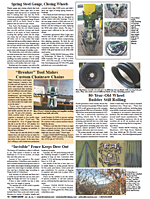
Click here to download page story appeared in.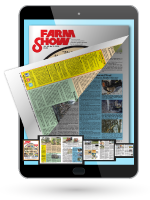
Click here to read entire issue
Old Cattle Breed Finds New Niche 32-3-8 Old breed Criollo (cree-o-yo) cattle have been living and adapting in the deepest canyons of Mexico for hundreds of years. Ed Fredrickson thinks they may be the perfect dry climate breed for today's grass fed market. The USDA researcher is working with a herd of the animals in New Mexico, studying foraging behavior, maturity, growth and carcass quality.
"If you throw away yield grades and just look at tenderness and palatability, these animals are as good or better than Angus," says Fredrickson. "They also are easier on the range than traditional breeds because they travel more, eat a wider variety of plant material, and need less water. We're working with the Nature Conservancy to use the Criollo to improve wildlife habitat. We may be able to market them as a heritage breed for organic grass fed beef or for their wildlife and habitat restoration benefits. Or we could sell them for rodeo use."
The name Criollo is used throughout Central and South America to describe common cattle breeds descended from Spanish imports. Fredrickson's Criollo may be the oldest and purest. They're related to the Corriente, commonly used in rodeos. Both are descended from animals first brought to northern Mexico and New Mexico in 1598.
Fredrickson says the Criollo were suggested to him by Jose Rios, a Mexican animal scientist. To get the purest possible bloodlines, Fredrickson and Rios went to the bottom of the Copper Canyon in Chihuahua, Mexico.
"The canyon, which is bigger than our Grand Canyon, ranges from 400 ft. to 9,000 ft. deep. Variations within the Criollo breed have adapted to the different levels. Criollo from the lowest elevation are the largest in size. As you go up in elevation, you get animals that are smaller and better suited for colder weather.
"We hope to be able to develop a uniform cow type and then select bulls from different elevations to fit the needs of breeders," explains Fredrickson.
The animals prefer a varied diet, average only 750 lbs., and remain active at higher temperatures. The researcher compares them to goats, which can graze steeper, drier slopes.
Fredrickson will know more by next fall. He's moving heifers and steers to higher elevations in New Mexico for the summer to fatten on grass. In mid-October he plans to look at carcass data. He's confident the results will be positive.
While he is specifically developing the breed for New Mexico, he sees them as having a broader market.
"With the climate changing to hotter and drier in many areas, we need cattle that can rely on grazing under those conditions to supply regional markets," says Fredrickson. "Also, because these animals have been treated as part of the family for hundreds of years, all you need to handle them is a rope and a snubbing post. They may be ideal for small operations."
Contact: FARM SHOW Followup, Ed L. Fredrickson, Room 254, 2995 Knox St., Las Cruces, New Mexico 88003 (ph 575 646-4842; fax 575 646-5889; efredric @nmsu.edu).
To read the rest of this story, download this issue below or click
here to register with your account number.





